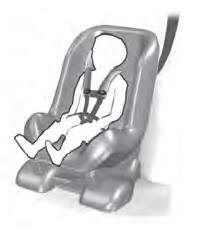Lincoln Aviator 2020-2025 Service Manual / Chassis / Steering System / Steering Column / Removal and Installation - Steering Column Tilt Motor
Lincoln Aviator: Steering Column / Removal and Installation - Steering Column Tilt Motor
Removal
NOTE: Removal steps in this procedure may contain installation details.
-
Remove the steering column.
Refer to: Steering Column (211-04 Steering Column, Removal and Installation).
-
NOTE: Note the position of the component before removal.
Remove the tilt motor.
-
Remove the trunnion bracket retainers and bracket.
-
Remove the tilt motor retainers and remove the tilt motor.
-
Remove the trunnion bracket retainers and bracket.
.jpg) |
Installation
-
On both sides.
Apply grease (supplied with the new motor) to the trunnion nut axles and the tilt motor lead-screw housing holes.
.jpg) |
-
Rotate the trunnion nut until the correct length is
achieved to align the lead-screw housing with the threaded holes in the
support arm.
.jpg) |
-
Install the tilt motor.
-
Position the tilt motor and install the tilt motor retainers.
Torque: 124 lb.in (14 Nm)
-
Install the trunnion bracket and the trunnion bracket retainers.
Torque: 71 lb.in (8 Nm)
-
Position the tilt motor and install the tilt motor retainers.
.jpg) |
-
Install the steering column.
Refer to: Steering Column (211-04 Steering Column, Removal and Installation).
-
If equipped with memory steering column, use the
steering column control switch and set the tilt motor soft stops as
follows.
-
Move the column upward until it reaches the end of travel.
-
Move the column in the same direction until it reaches the end of travel again.
-
Move the column downward until it reaches the end of travel.
-
Move the column in the same direction until it reaches the end of travel again.
-
Move the column upward until it reaches the end of travel.
 Removal and Installation - Steering Column Telescopic Motor
Removal and Installation - Steering Column Telescopic Motor
Removal
NOTE:
Removal steps in this procedure may contain installation details.
Remove the steering column.
Refer to: Steering Column (211-04 Steering Column, Removal and Installation)...
 Removal and Installation - Steering Column Upper Shaft
Removal and Installation - Steering Column Upper Shaft
Removal
NOTE:
Removal steps in this procedure may contain installation details.
Remove the steering column.
Refer to: Steering Column (211-04 Steering Column, Removal and Installation)...
Other information:
Lincoln Aviator 2020-2025 Owners Manual: Checking MyKey System Status and Using MyKey With Remote Start Systems
Checking MyKey System Status You can find information about your programmed MyKeys by using the touchscreen. MyKey Distance Tracks the distance when drivers use a MyKey. The only way to delete the accumulated distance is by using an admin key to clear all MyKeys...
Lincoln Aviator 2020-2025 Service Manual: Diagnosis and Testing - Charging System
Diagnostic Trouble Code (DTC) Chart Diagnostics in this manual assume a certain skill level and knowledge of Ford-specific diagnostic practices. REFER to: Diagnostic Methods (100-00 General Information, Description and Operation). Diagnostic Trouble Code Chart Module DTC Description Action BCM B11DB:02 Battery Monitoring Module "A": General Signal Failure GO to Pinpoint Test F BCM B11DB:08 Battery Monitoring Module "A": Bus Signal/Message Failures GO to Pinpoint Test F BCM B11DB:09 Battery Monitoring Module "A": Component Failures GO to Pinpoint Test F BCM B11DB:11 Battery Monitoring Module "A": Circuit Short To Ground GO to Pinpoint Test F BCM B11DB:49 Battery Monitoring Module "A": Internal Electronic Failure GO to Pinpoint Test I BCM B11DB:55 Battery Monitoring Module "A": Not Configured GO to Pinpoint Test J BCM B1489:11 Battery Monitoring System (BMS) Sensor Power: Circuit Short To Ground GO to Pinpoint Test F PCM P0562:00 System Voltage Low: No Sub Type Information GO to Pinpoint Test B PCM P0563:00 System Voltage High: No Sub Type Information GO to Pinpoint Test A PCM P065B:00 Generator "A" Control Circuit Range/Performance: No Sub Type Information GO to Pinpoint Test B PCM P065C:00 Generator "A" Mechanical Performance: No Sub Type Information GO to Pinpoint Test B PCM P0A3B:00 Generator "A" Over Temperature: No Sub Type Information GO to Pinpoint Test K PCM P0A5A:00 Generator Current Sensor Circuit Range/Performance: No Sub Type Information GO to Pinpoint Test E PCM P0A5B:00 Generator Current Sensor Circuit Low: No Sub Type Information GO to Pinpoint Test E PCM P0A5C:00 Generator Current Sensor Circuit High: No Sub Type Information GO to Pinpoint Test E PCM U012D:00 Lost Communication With Generator "A" Control Module: No Sub Type Information GO to Pinpoint Test G PCM U042E:00 Invalid Data Received From Generator "A" Control Module: No Sub Type Information GO to Pinpoint Test G Inspection and Verification Verify the customer concern by operating the charging system...
Categories
- Manuals Home
- Lincoln Aviator Owners Manual
- Lincoln Aviator Service Manual
- Keyless Entry
- Configuring The Head Up Display
- Remove and Reinstall the Battery
- New on site
- Most important about car
Child Seats

Use a child restraint (sometimes called an infant carrier, convertible seat, or toddler seat) for infants, toddlers and children weighing 40 lb (18 kg) or less (generally four-years-old or younger).
Using Lap and Shoulder Belts
WARNING: Do not place a rearward facing child restraint in front of an active airbag. Failure to follow this instruction could result in personal injury or death.
Copyright © 2025 www.liaviator2.com
